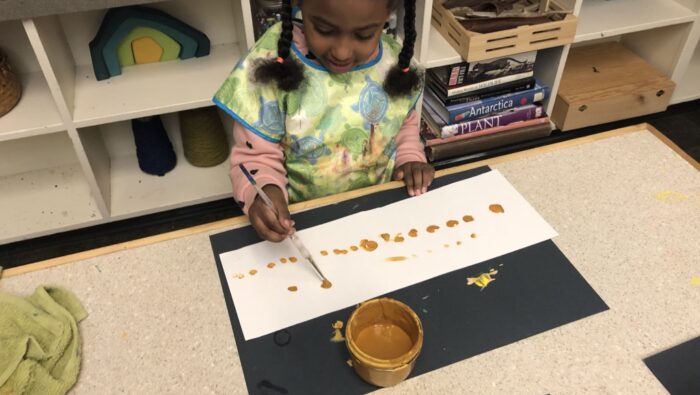
What are Habits of Mind? How do They Influence Brain/Mind Development?
Written in 2017 by one of TPP Co-Founders, Judy Graves. Judy Graves founded the Opal School and inspires us still today.
Authur Costa and Bena Kallick in their book, Learning and Leading with Habits of Mind (2008) define habits of mind as “what successful people do when they are confronted with problems, the resolutions of which are not immediately apparent.” It’s what young children do when they face new situations and challenges in which adults are not controlling or determining their actions. A habit of mind is a combination of attitudes, cues, skills, past experiences and tendencies that guide one’s behaviors and helps us choose one behavior over another. As habits of mind are supported and practiced overtime they influence a child’s brain architecture and the development of the brain’s executive function. Children who weave constructive habits of mind are engaged in the practice of becoming intentional, intelligent learners. What better way to prepare for the years of schooling ahead and for life’s challenges.
Teaching Preschool Partners Demonstration Preschools track five habits of mind and skill development in two curriculum areas. We refer to these visible expressions of the habits and skills as “traits” that give us information about the habit or skill that the child is developing. We have selected five significant habits of mind but recognize that there are many ways to label and describe these habits because there is overlap among them and many ways that one influences the others. The five habits we’ve identified represent a prioritized synthesis of habits that Ellen Galinsky identifies as “essential life skills,” in her book, Mind in the Making (2010) and what Costa and Kallick refer to as “essential characteristics for success” in their book, Learning and Leading with Habits of Mind (2008). The authors identified habits after reviewing and looking for patterns in research findings in the fields of child development and neuroscience over the recent decade. Demonstration Preschool teachers use developmental continuums to document and record the child’s developmental progress over time.
The five habits and the traits that make them visible include the following habits of mind.
Focuses attention to pursue an interest, gratify curiosity, respond to a challenge, or try out an idea. Traits: The child…
Is engaged, slows down and notices details; avoids impulsivity by self-regulating and delaying gratification in order to achieve a bigger goal; is persistent and works toward a goal without giving up easily; manages distractions by knowing where to put attention and what to ignore; works/plays with intention and purpose.
Communicates ideas and emotions clearly and appropriately. Traits:
The child…
Uses words, materials, gestures, or images to convey and share ideas, stories, emotions in ways that others understand; listens and responds appropriately to the messages of another; expresses satisfaction stemming from a discovery, an accomplishment, an interaction or relationship; engages in conversation and interacts comfortably with others.
Makes connections, notes relationships and organizes items based on observed details. Traits: The child…
Observes, sorts and organizes items in a variety of ways based on distinguishing details; recognizes patterns including similarities and differences; sees relationships between symbols and what they represent such as noting relationships between spoken and written language or seeing relationships between numbers and the quantities they represent; connects past knowledge and experiences to new situations.
Collaborates with others to accomplish a shared goal. Traits: The child…
Include others; shares resources; builds on the ideas of others; contributes ideas to a group work; recognizes the strengths and contributions of others; listens to others with interest, curiosity, empathy and understanding; demonstrates interdependent thinking that values a diversity of ideas that are alike and different from one’s own.
Thinks strategically, creatively and reflectively to follow an interest or tackle a challenge. Traits: The child…
Gathers data through the senses and uses it to interpret experiences; playfully poses questions, designs and develops strategies to identify and take on intriguing problems/challenges; demonstrates flexible thinking and is willing to change based on new information; takes responsible risks to tackle challenges and make discoveries; learns from previous experiences; exhibits curiosity and imagination by creating novel ideas and solutions.
The two skill areas include:
Demonstrates early literacy awareness. Skills: The child…
Recognizes and writes own name; gives meaning to marks, drawings and letters; recognizes the written names of classmates and/or family members; knows the names of alphabet letters, upper and lower case; recognizes the beginning sounds of words; uses letters/marks and drawings to create stories/messages.
Demonstrates early mathematical thinking. Skills: The child…
Knows own age and what the number represents; counts up to 10 to discover the number of items; demonstrates one-to-one correspondence when counting objects; uses numbers to explain/demonstrate quantities; can count to 20 or beyond to discover number of items; writes numbers to explain/demonstrate quantities.